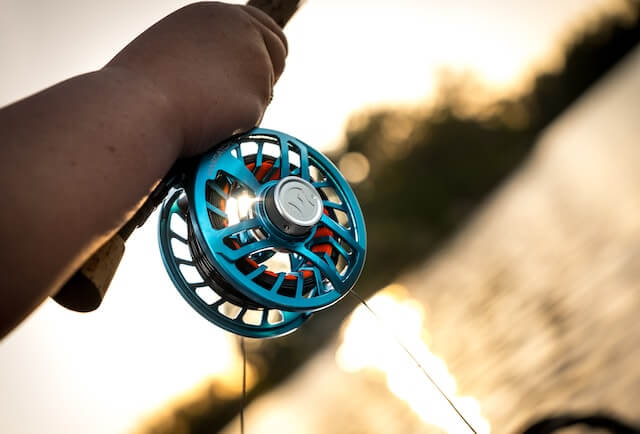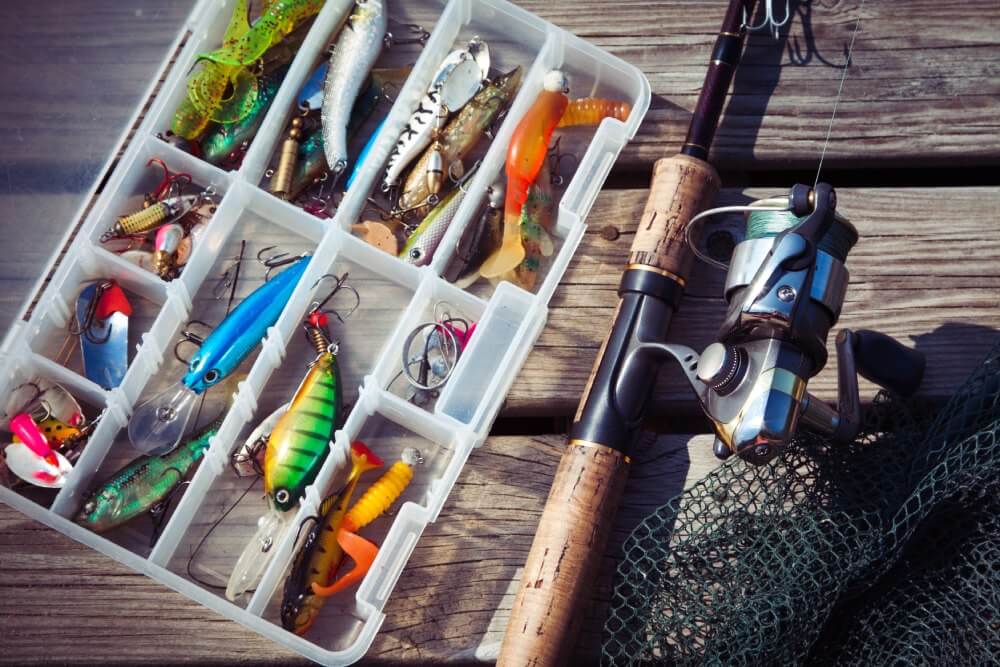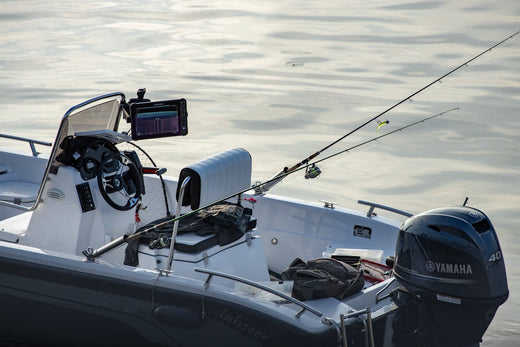Your Cart is Empty
ORDERS OVER $99 UNLOCK FREE* SHIPPING
Menu
-
- Home
- Archery
- Automotive/RV
- Boating
- Camping
- Fishing
- Hunting
- Outdoor
- Shooting
- Trailering
- Watersports
- Brands
-
- (208) 590-7477
- Login

ORDERS OVER $99 UNLOCK FREE* SHIPPING

How to Choose the Best Trolling Motors for Fishing
6 min read
When it comes to fishing, having the right equipment can make all the difference, and that’s where trolling motors come into play. These specialized motors are designed to propel your boat at slow speeds, allowing anglers to navigate through various fishing waters while maintaining a low profile to avoid alerting fish. Understanding the mechanics and features of trolling motors is crucial for selecting the best one for your needs.
There are primarily two types of trolling motors: bow-mounted and transom-mounted. Bow-mounted motors are attached to the front of the boat and offer better maneuverability, making them ideal for those who fish in tight spots. On the other hand, transom-mounted motors are attached to the back of the boat and are generally easier to install, making them a popular choice among recreational fishermen.
When exploring how to choose trolling motors for fishing, consider factors such as thrust power, which is measured in pounds and determines how effectively the motor can push your boat through water. Additionally, battery life and overall durability are essential components to keep in mind, as they directly affect your fishing experience.
For more comprehensive insights into selecting the ideal trolling motor, visit our website to learn more and get started today! Click here.
Key Features to Consider When Choosing

When selecting a trolling motor, it’s essential to evaluate several key features that can significantly impact your fishing experience. These features include:
- Thrust Power: The amount of thrust a motor provides is critical. Typically, a motor should have at least 2 pounds of thrust for every 100 pounds of boat weight. This ensures that your boat can move efficiently through different water conditions.
- Control Type: Trolling motors come with various control options, including hand control and foot control. Hand controls are more common and allow for easier adjustments, while foot controls provide hands-free operation, allowing for better focus on angling.
- Battery Life: The runtime of your trolling motor is tied to its battery life. Look for models that are efficient and have a long-lasting battery to maximize your time on the water without interruptions.
- Mounting Options: Consider whether you need a bow-mounted or transom-mounted motor based on your fishing style and boat type. Each mounting option has its advantages, affecting maneuverability and ease of use.
- GPS and Sonar Integration: Advanced trolling motors come equipped with GPS and sonar capabilities, allowing you to plot routes, anchor, and even track fish more effectively. These features can greatly enhance your overall fishing experience.
Taking the time to understand and evaluate these features can help you make an informed decision, ensuring that your trolling motor meets your specific fishing needs.
Types of Trolling Motors Explained

Understanding the different types of trolling motors available on the market is crucial for making an informed choice. Here are the main categories:
- Bow-Mount Trolling Motors: These motors are mounted at the front of the boat and are favored for their ability to provide excellent maneuverability and control. They are ideal for larger boats and fishing applications where precision is key.
- Transom-Mount Trolling Motors: Mounted at the rear of the boat, transom-mount motors are typically lighter and easier to install, making them suitable for smaller boats or kayaks. They are a great option for casual anglers who require basic features.
- Engine-Mount Trolling Motors: These motors are attached to the main engine of the boat and provide additional thrust without taking up much space. They are often used in larger vessels and can help with navigation when fishing at slow speeds.
- Saltwater Trolling Motors: Designed specifically for saltwater fishing, these motors are built with corrosion-resistant materials to withstand harsh marine environments. If you fish in saltwater, investing in a saltwater trolling motor is essential for longevity and performance.
- Freshwater Trolling Motors: These motors are more suited for freshwater environments and generally come at a lower price point. They offer various features tailored to the needs of freshwater anglers.
Each type of trolling motor serves different purposes and fishing styles, so it’s important to choose one that aligns with your specific needs and preferences.
How to Match Trolling Motors with Your Boat
Matching your trolling motor with your boat is essential to ensure optimal performance and efficiency. Here are some key factors to consider when making your selection:
- Boat Size and Weight: The size and weight of your boat will significantly influence the power and thrust needed from your trolling motor. As a rule of thumb, you should have at least 2 pounds of thrust for every 100 pounds of boat weight. This includes passengers and gear.
- Motor Shaft Length: The shaft length of the trolling motor should be compatible with your boat's transom height. If the motor is too short, it won't be effective in the water; if it's too long, it may cause drag. Measure your boat's transom from the waterline to the top of the transom to determine the appropriate shaft length.
- Type of Fishing: Consider the type of fishing you will be doing. If you're fishing in shallow waters, a motor with a shorter shaft may be ideal. For deeper waters, longer shafts provide better control and maneuverability.
- Power Source: Trolling motors can be powered by batteries or integrated with the boat's engine. Assess your power requirements based on the motor's thrust and the duration of your fishing trips. Most anglers opt for a deep-cycle battery for reliability.
- Control Features: Different motors come with various control options such as foot pedals, hand controls, or wireless remotes. Choose a control system that complements your fishing style and comfort level.
By carefully considering these factors, you can select a trolling motor that matches your boat perfectly, enhancing your overall fishing experience.
Top Brands and Models to Consider

When it comes to selecting a trolling motor, there are several reputable brands known for their quality and performance. Here are some of the top brands and models to consider:
- Minn Kota: Renowned for its innovation and durability, Minn Kota offers a wide range of trolling motors suitable for various boating needs. The Ultrex model is particularly popular, featuring advanced technology such as Spot-Lock for precise positioning.
- Motorguide: Another trusted name in the industry, Motorguide provides a selection of reliable motors. The Xi5 series is a standout, offering a wireless system that enhances maneuverability and convenience.
- Newport Vessels: Ideal for those on a budget without sacrificing quality, Newport Vessels presents the NV-Series, which features a lightweight design and efficient performance, making it perfect for small boats.
- Garmin: Known for its technological advancements, Garmin has entered the trolling motor market with the Force motor, which includes integrated GPS and sonar capabilities for an enhanced fishing experience.
- Rhino: Rhino trolling motors are recognized for their robust construction and performance in both saltwater and freshwater environments. Their R-Series has received positive reviews for its reliability.
Choosing a trolling motor from one of these reputable brands can significantly enhance your fishing trips, providing you with the reliability and features you need to succeed on the water.
Maintenance Tips for Longevity of Trolling Motors
To ensure your trolling motor remains in optimal condition for years to come, regular maintenance is essential. Here are some valuable maintenance tips for the longevity of your trolling motor:
- Regular Cleaning: After each use, rinse your motor with fresh water to remove salt, dirt, or debris. This helps prevent corrosion and buildup that could affect performance.
- Inspect for Damage: Periodically check for any visible signs of wear, such as frayed wires or cracks in the housing. Addressing these issues early can prevent further damage.
- Battery Care: Ensure that your battery is charged correctly and stored in a cool, dry place. Regularly check the battery terminals for corrosion and clean them as needed.
- Propeller Maintenance: Keep an eye on the propeller for any signs of damage or obstruction. Regularly inspect and clean the propeller to maintain efficiency.
- Lubrication: Refer to the manufacturer’s guidelines for proper lubrication of moving parts. Keeping components well-lubricated reduces friction and wear.
By following these maintenance tips, you can significantly extend the life of your trolling motor, ensuring it performs reliably when you need it most. Visit our website to learn more and get started today! Click here.






